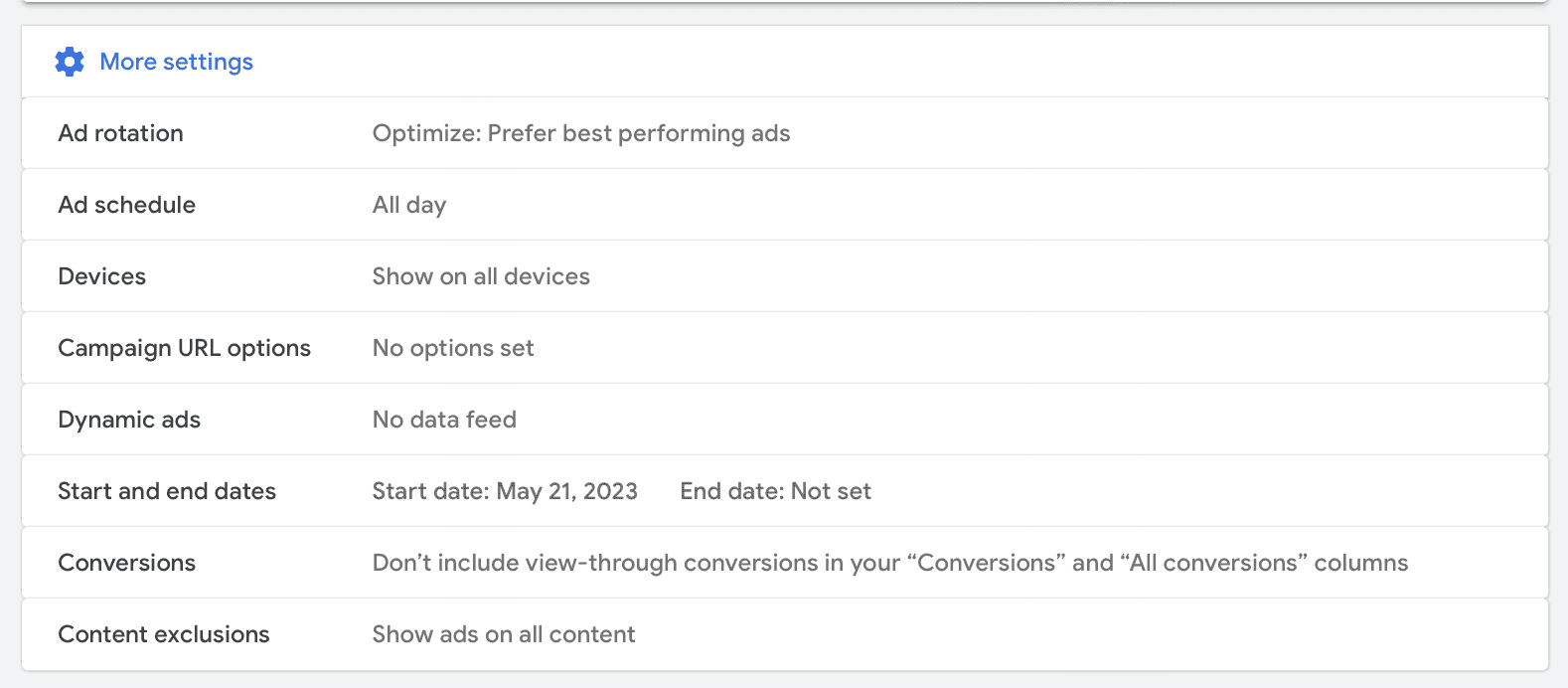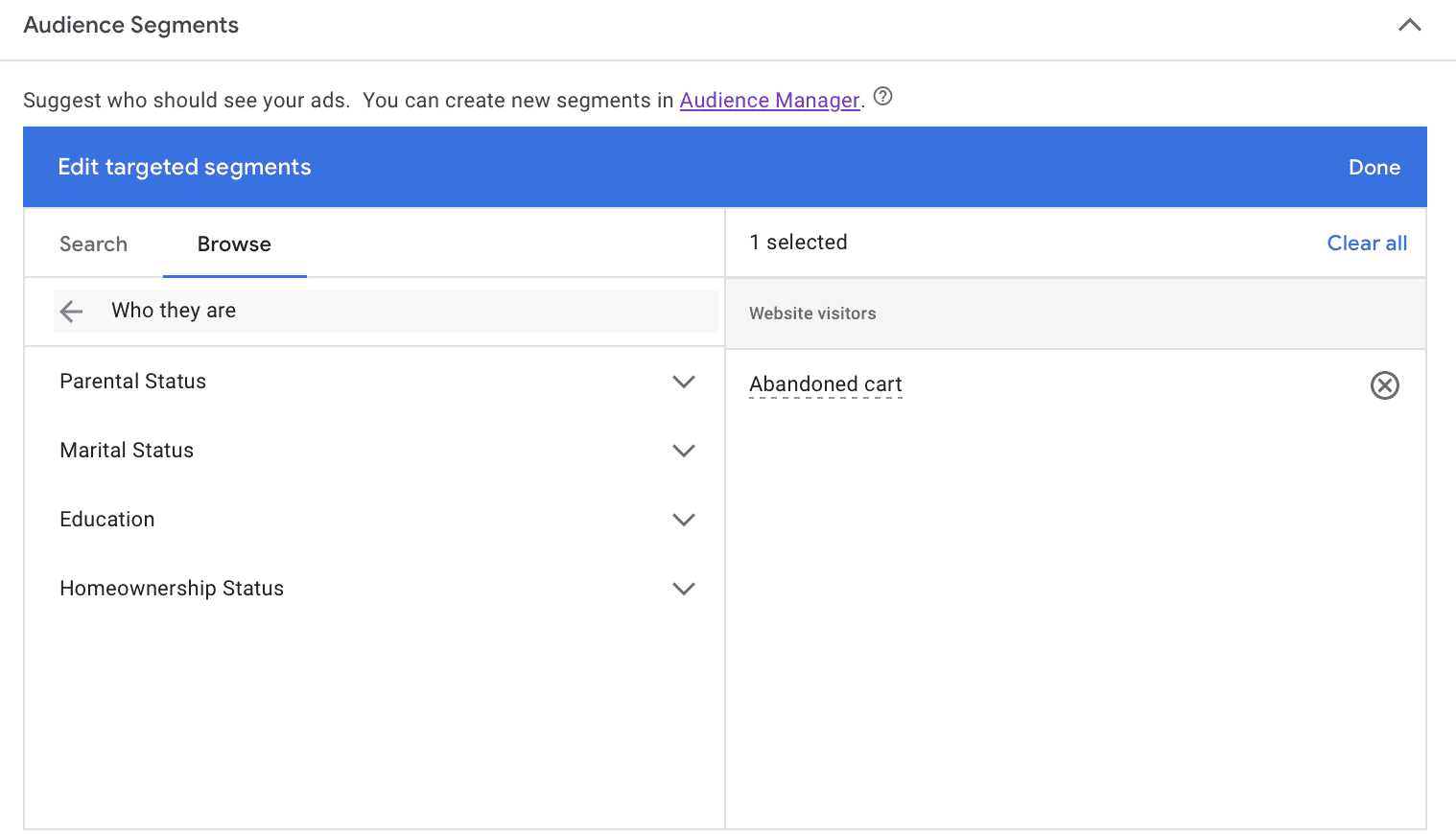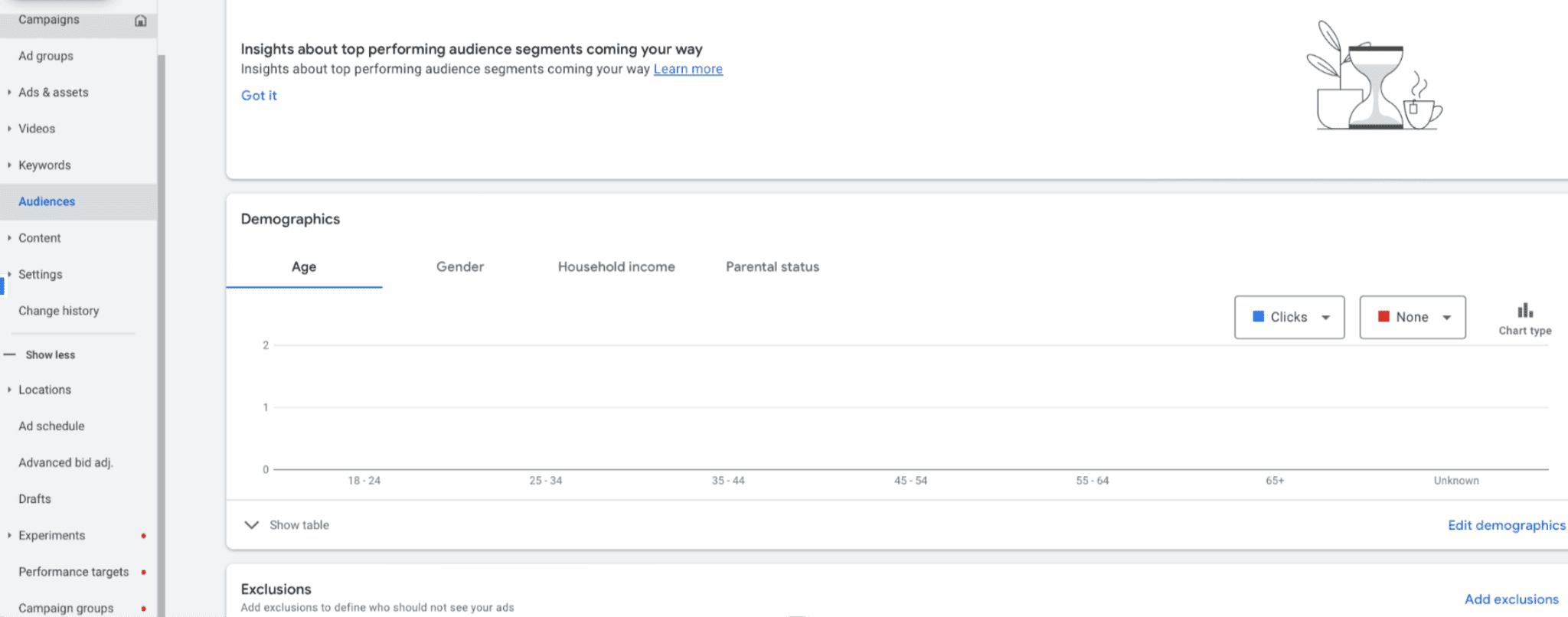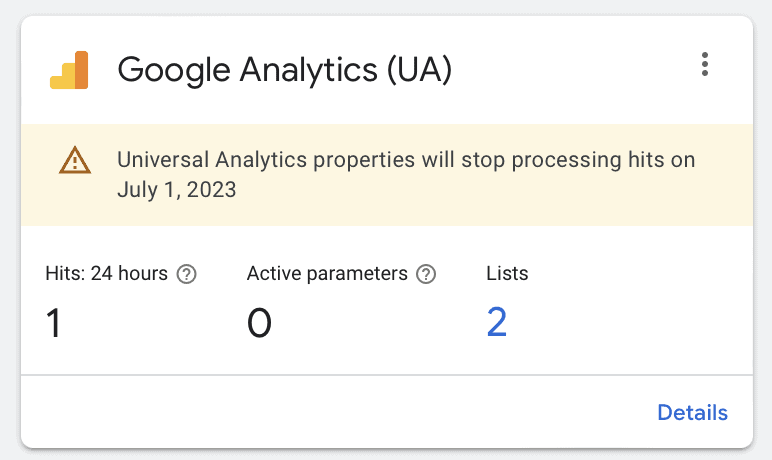Advanced Google Display Remarketing Optimizations
So far in our Google Display Ads Ultimate Guide, we’ve already talked pretty extensively about Display remarketing campaigns (including how to set them up and how to build remarketing lists). Now we’re going to take a look at advantaged strategies and best practices for Google Display remarketing campaigns that will optimize results— and your profit.
1. Narrow Down Placements if Needed
When you’re creating remarketing campaigns, you do have the option to narrow down placements. If there’s a good reason for excluding different placements, we recommend doing so.
Two common options are to exclude certain devices (including device types or operating systems), or to exclude your ad from appearing in certain types of content. These options are available under your “Campaign Settings,” under the “More Settings” drop-down menu.

Exclusions won’t be a fit for every campaign. But you may not, for example, want to target products meant to appeal to parents for their toddlers children on sites with “Mature” level content; even if the audience is right, the placement could be off enough that it wouldn’t do you any favors (or drive any clicks).
And if you’re trying to create a remarketing campaign to get existing users to download an app, it makes sense to exclude any devices that aren’t supported by said app.
2. Add Audience Layering
We’ve talked about how to set up remarketing audiences already. These audience lists will contain specific segments of users— like those who are email subscribers, YouTube viewers, or past customers. While this is what we’ll consider a core building block for your remarketing audience targeting, you can narrow it down further if you choose with additional audience layering.

Audience layering allows you to add additional criteria to the audience targeting, including demographics, behavior, interests, and more. So if you want to reach a small segment of your audience but need help dividing up that segment for more-targeted campaigns, you can do so here.
Let’s look at an example.
Say that you’re a jeweler, and Valentines Day is fast approaching. You target all email subscribers, but want to create a special campaign promoting high-priced items. You know that married couples will be more likely to drop 1k on these items, compared to those who are just dating and often prefer to keep purchases to $500 or less.
So, you target email subscribers but then also choose to target audience members who are also married. If your list is large enough, this will make it easier for you to create that hyper-niche campaign and show it to the right people.
3. Turn Optimized Targeting Off
This is a simple tip, but a good one. When you’re setting up your targeting, you’ll see a message at the top of the screen letting you know that optimized targeting is enabled and running.
Underneath your targeting options, you’ll see the option to disable it. We recommend flipping that switch to toggle it off.

Optimized targeting takes advantage of Google’s machine learning, but it comes at a cost when you’re running a targeted campaign. Google will take control of ad distribution, and you’re no longer remarketing to the specific audience you want to remarket to; you end up reaching cold audiences, which defeats the purpose of a remarketing campaign entirely.
4. Create Carefully Segmented Campaigns
The power of remarketing audiences isn’t just in the fact that you aren’t targeting ice-cold audiences, but also that you know who you’re targeting.
Are you targeting first-time site visitors? Which landing pages or products did they view? And did they add any items to the cart?
Or maybe you’re targeting high-value segments of your audience, like those that have joined a loyalty or rewards program, or those who have high average order values.
With the right list-building strategies, you know a lot about who you’re targeting. Use that to your advantage, sending them to dedicated landing pages with tailored-to-them ads and offers.
5. Add Audience Exclusions
We love negative and exclusionary targeting, because there’s nothing like ensuring that your ad finds the right people and isn’t shown to the wrong people.
You can actually add audience exclusions to your ad campaigns by finding the “Audiences” tab on the right side of the main dashboard and clicking on it. You’ll see the option for “Exclusions” at the bottom of this page.

You’ll be asked which campaign or ad group you want to add the exclusion to. Choose the Display campaign in question, and then exclude the relevant audience.

Real estate agents, for example, may choose to remove new homeowners from their audiences; these users are unlikely to be buying or selling anytime soon. And a pet store company may choose to exclude cat owners from a campaign promoting new products specifically for dog owners.
6. Have Auto-Updating Data Sources
There are different data sources that you can use to set up your remarketing audiences, including:
- The Google Tag Manager
- Google Analytics
- YouTube
- App analytics
While you can manually upload files of different audience segments to create audience lists, in many cases having data sources that update regularly and automatically is a huge asset.

You want to have users seeing a retargeting ad hours after they’ve added an item to their cart, for example, so you can strike while the iron is hot. That’s hard to do if your data source doesn’t update regularly, and Google doesn’t even add that user to the abandoned cart list until three days have passed.
Google’s Tag Manager will allow you to set up Conversion Tracking for your site, so make sure you have this up and running.
7. Make Sure You’re Using Google Analytics 4
If you’re not sure what version of Google Analytics you’re using, there’s a good chance that you’re still relying on Universal Analytics. You do want to make sure that if you’re using Google Analytics as a data source for your remarketing campaigns that you’re setting up Google Analytics 4, which is the newest version of the analytics platform.
This is important, because as of July in 2023, Google is migrating entirely to GA4. They’re currently displaying a message on the UA Google Analytics option the data sources section of Google Ads.

So, start creating audiences in Google Analytics 4 if this is a data source you want to use (though we still recommend connecting your CRM directly or with a third-party tool like Zapier). You can see more about how to do that here.
Final Thoughts
Remarketing campaigns can be wildly profitable, and Google Display is an outstanding place to run them. You can leverage that warm relationship with leads and customers and the ability to show up wherever they are online to generate more interest and drive sales. These optimization tips can certainly help, especially when they’re used strategically.
Need more help getting results from your Google Display Ads? Learn more about how we can help you here.



 Responsive Display Ads: Everything You Need to Know
Responsive Display Ads: Everything You Need to Know
